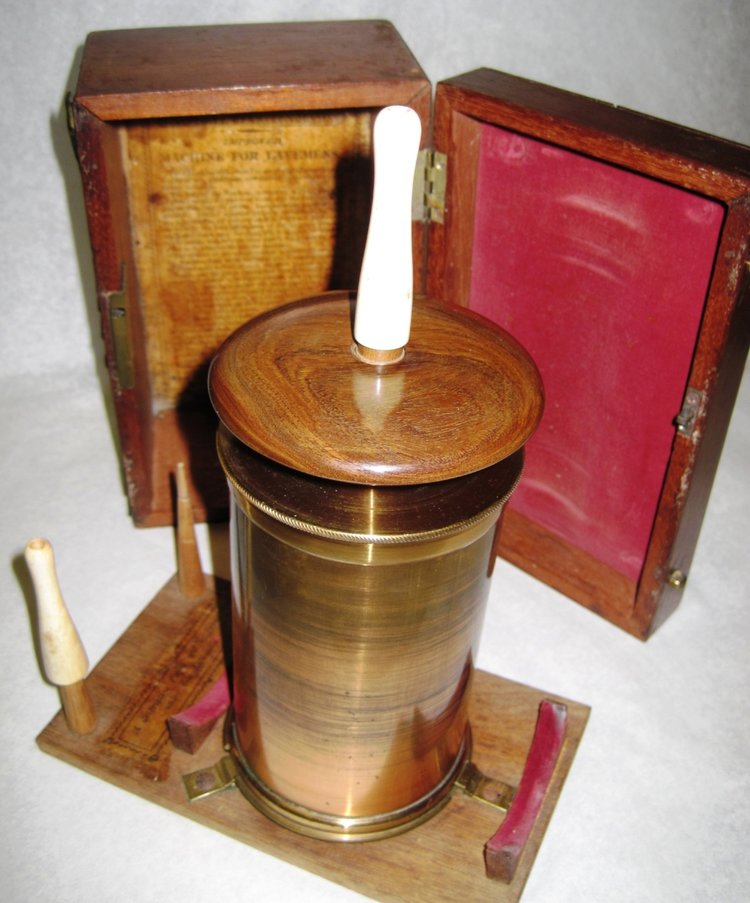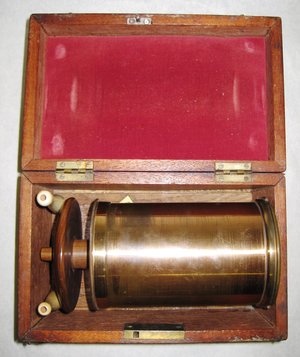

contraceptive douch device
We've found a Domestic Encyclopedia from 1821, which tells us that during the Georgian period, the most usual clysters (enemas) consisted simply of either a pewter syringe or the bladder of a pig, ox or sheep with an attached ivory pipe secured with thread.
Now, the problem with this, for your Georgian lady or gentleman, is that it would usually require help from a second party...
Enter the Machine for Lavemens (the following taken from the 1821 Domestic Encyclopedia):
"This machine is ingeniously adapted both for private use, and to admit of assistance. One of its essential advantages is, that the injection may be received into the body, without the least intervention of air; because the cylinder containing the liquid is provided with a piston, which, by gently pressing it down upon the fluid, till it appears on the top of the ivory pipe, expels the air, and thus prevents its introduction into the bowels."
Our Lavemens machine is in fabulous condition, and is believed to have been used as a vaginal douche contraceptive device, rather than as a rectal enema. This is on display in the George Marshall Medical Museum’s Home Medicine case.